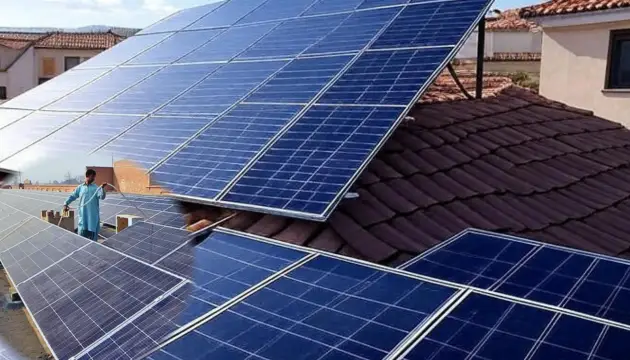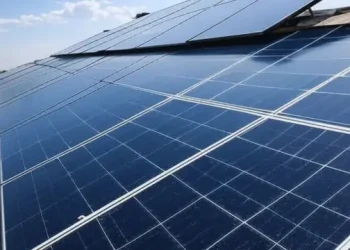ISLAMABAD: The federal government has imposed an 18% sales tax on imported solar panels in the Budget 2025-26.
Finance Minister Muhammad Aurangzeb, while presenting the budget in the National Assembly, said that the step aims to create a fair tax system and fix old issues in the sales tax structure.
He said the move will help bring equal competition between imported and locally made solar panels. The minister added that this tax will support the growth of Pakistan’s local solar panel industry, which is important for promoting clean energy and reducing reliance on imports.
According to energy experts, the new tax will raise the price of solar panels in the market. Panels with a capacity of 500 to 600 watts — currently available at an average price of Rs17,000 to Rs20,000 — are expected to become more expensive by Rs3,000 to Rs4,000 each. Experts also say that in practice, the cost impact may be even higher than 18%, as other taxes and extra charges will also be added. This could make solar panels less affordable for many households and small businesses.
More people using solar through net-metering
Pakistan’s use of solar energy is growing. As of March 31, 2025, the country’s net-metering capacity has reached 2,813 megawatts (MW), according to the Pakistan Economic Survey 2024–25. This shows a 12% rise in just nine months, up from about 2,500MW last year, as noted by NEPRA’s 2024 industry report.
ALSO READ >>>Pakistan unveils federal budget 2025-26: All you need to know
Experts say this increase is mainly because solar panel prices have gone down, and net-metering has become more popular. Net-metering lets people install solar panels on their rooftops, sell extra electricity to power companies during the day, and buy electricity at night. This lowers electricity bills and helps the national grid.
This growth has also helped improve voltage levels and reduce power losses in the system.
However, experts say net-metering still makes up only a small part of Pakistan’s full solar potential. In recent years, Pakistan has imported solar equipment that could generate between 20,000 and 22,000MW. A lot of this is being used off-grid — especially in farms, homes, and factories.
Power capacity and shift to renewables
Pakistan’s total power generation capacity reached 46,605MW by March 2025 — a 1.6% increase from last year. This includes new progress in solar, wind, and bagasse (sugarcane waste) energy projects, along with the start of the 884MW Suki Kinari Hydropower Project. At the same time, the government has ended some agreements with private power producers.
Today, 44.3% of the power mix comes from hydropower, nuclear, and other renewable sources. Thermal (fossil fuel) energy now makes up 55.7%, which is a decrease.
Here’s the current renewable breakdown:
-
Hydropower: 24.4%
-
Nuclear: 7.8%
-
Solar and wind (including net-metering): 12.2%
Concerns over future of net-metering
Energy expert Khalid Waleed from the Sustainable Development Policy Institute (SDPI) has raised concerns about the government’s plan to lower the net-metering buyback rate — the amount DISCOs pay to solar users for extra electricity.
The current rate is Rs27 per unit, but the government may reduce it to Rs10. Waleed said this could slow down clean energy growth and affect investor confidence. He suggested a slower cut to Rs15–18 per unit to keep people interested in installing solar panels.
Pakistan’s target under NEPRA’s IGCEP 2022–31 plan is to reach 3,420MW of net-metering by 2031. Experts believe this goal can be met — or even passed — if DISCOs continue supporting rooftop solar systems.














